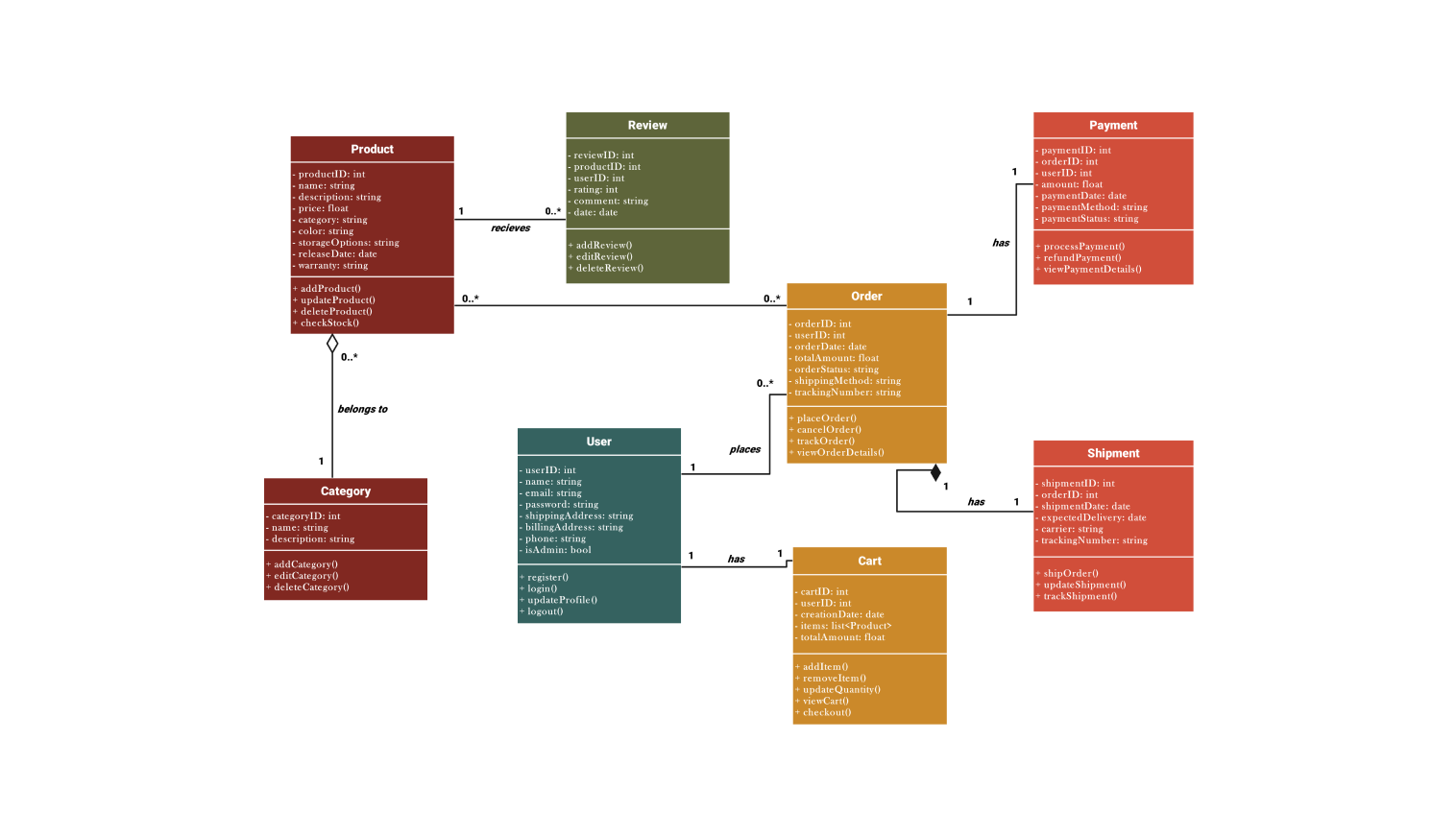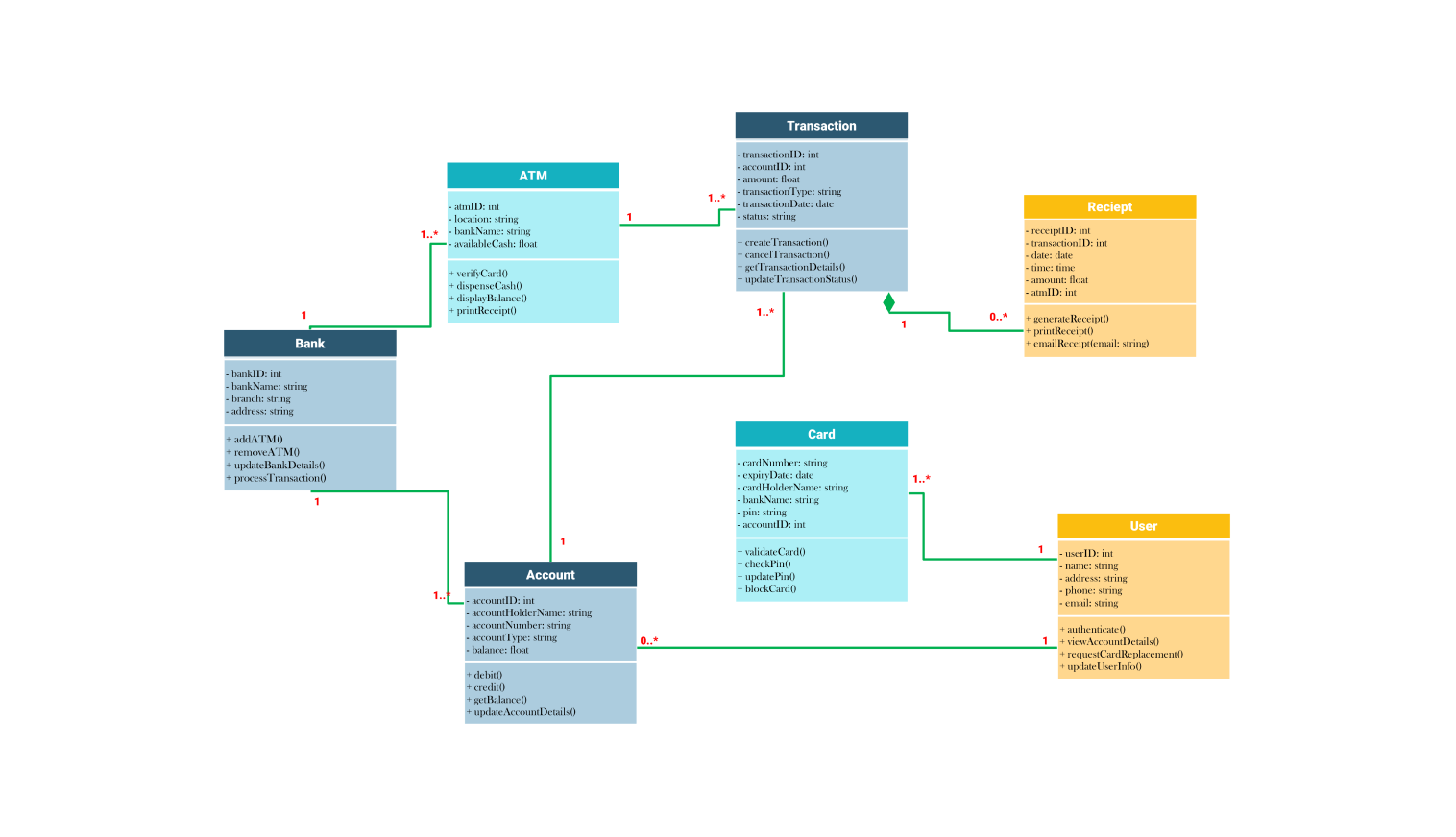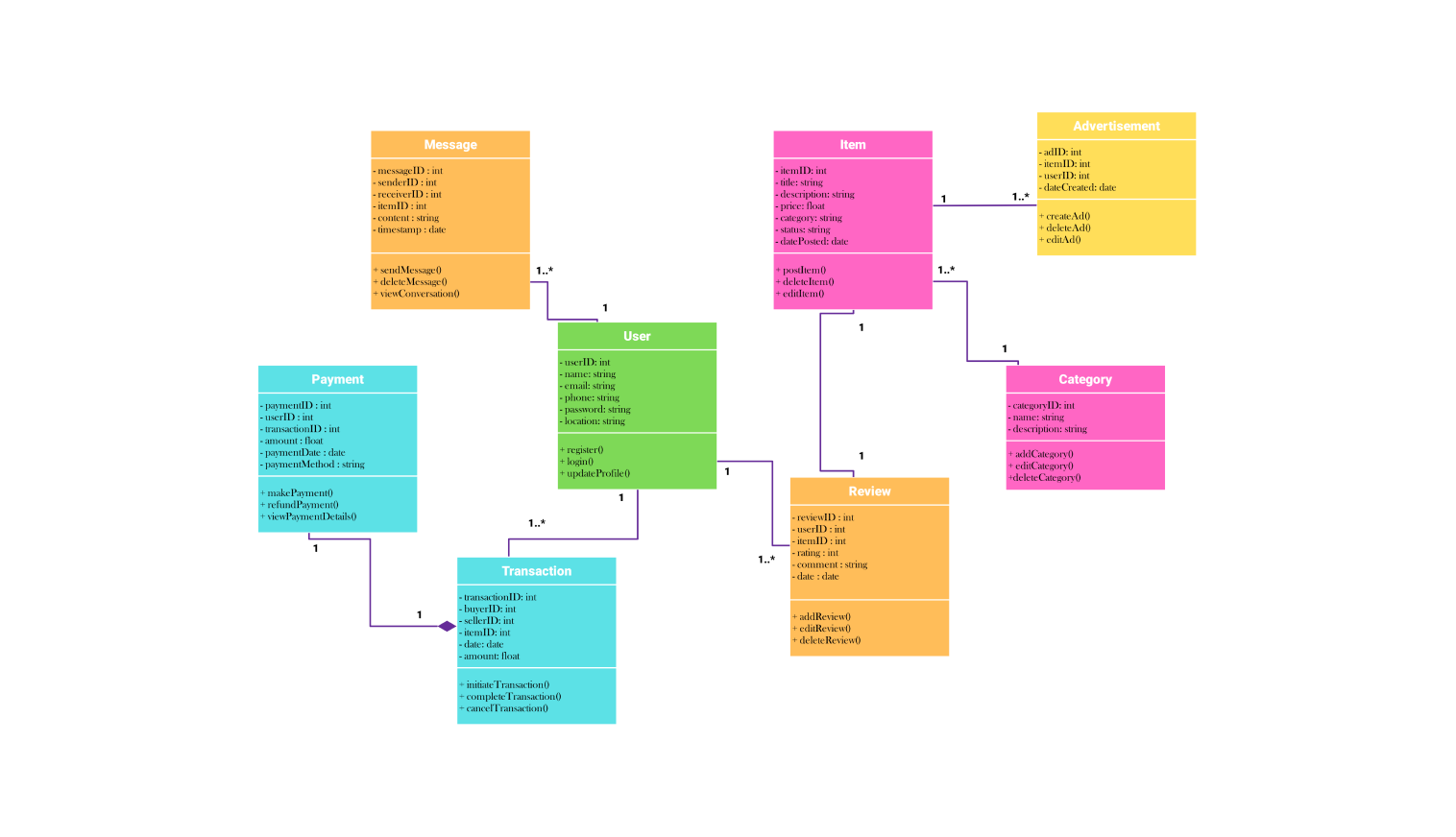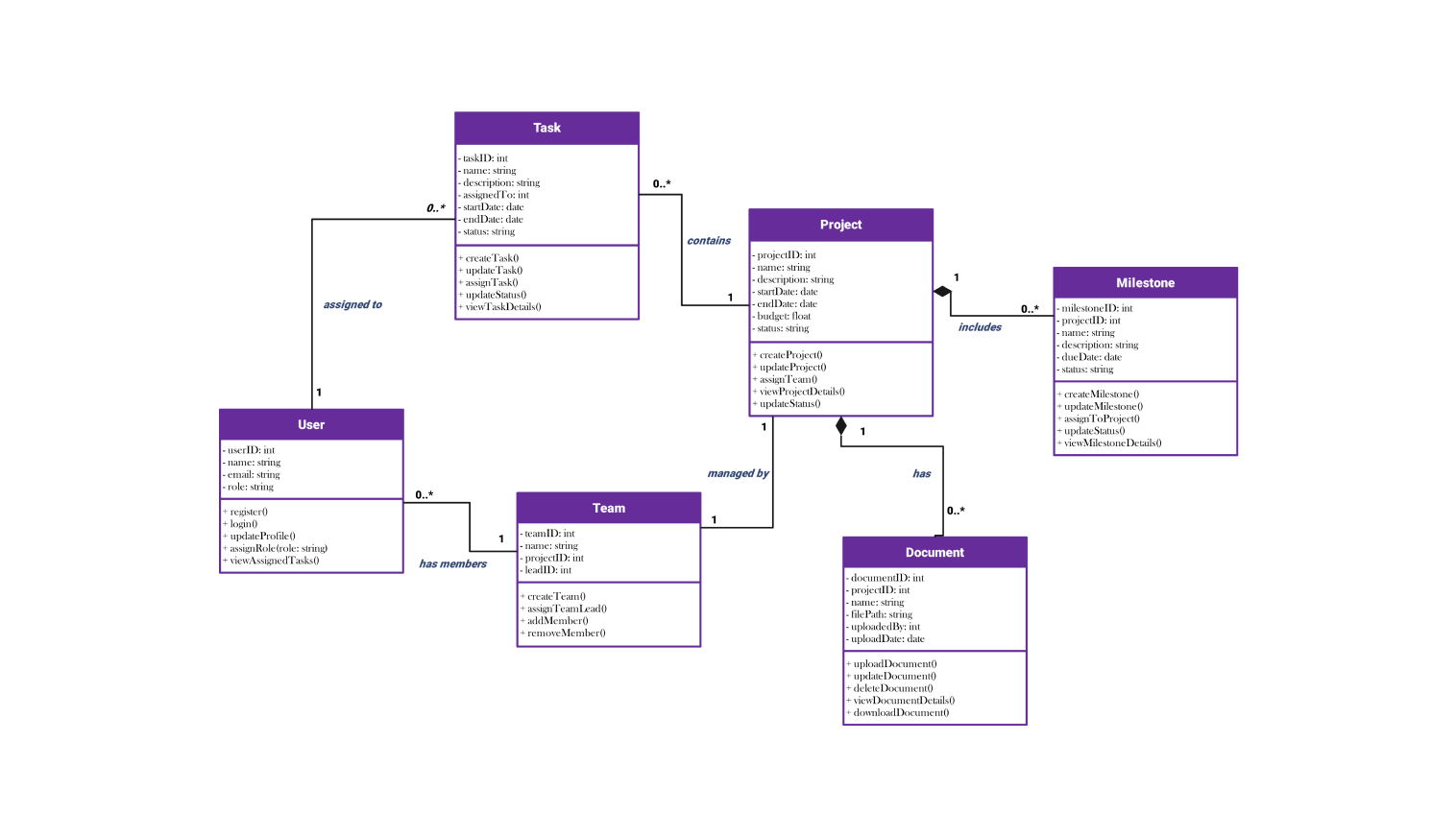- All templates
- Class diagrams templates
- Class diagram apple store
About this class diagram for Apple store
This diagram offers a thorough, intensive rundown of many viewpoints of the system. These include administration, categorization, reviews, and purchasing processes for items. The focal point is the product class. Products for sale are items with a name, cost, color, and guarantee.
We organize products to facilitate quick discovery by consumers. Each product may also receive consumer feedback. This highlights ratings and user comments through the review class.
The review organization records customer ratings and comments on products. Each review corresponds to a specific product. This shows a one-to-many relationship. A single product may have several evaluations. It helps companies learn about their products and client satisfaction. The reviews help buyers by sharing past clients' experiences.
The project object includes larger projects with several tasks. Each project has its key properties. They include its name, budget, start and finish dates, status, and project ID. These traits help managers keep the project on schedule and under budget. They help check the project's scope, timing, and finances.
The user class represents the platform's users. Users have the option to construct carts in which they may gather goods they plan to buy. It's easier for people to organize their purchases if each cart has different items. When customers decide to finish their purchase, the items in their basket become an order. This order has information about it. It includes the date, total cost, and mailing address.
When a customer places an order, the payment class records the payment details. It tracks the date, amount, and method. Linking each payment to a specific order ensures a safe, organized process. This organization is vital for monitoring the order's finances. It also helps process payments. After that, the shipment class assumes control and monitors the order's delivery progress.
The shipment class assures that the order will be sent to the specified address. It does this by monitoring the shipping company, the delivery window, and the tracking number. The system's interconnectedness is evident in how orders, payments, and shipments interact. It also provides users with a smooth shopping experience.
How to use this template
To begin, select the Use this template option to display the pre-designed diagram template. Customize the layout to represent your classes, connections, and properties.
Customize your diagram by altering the text boxes with your content. Store used components, like product categories or user roles, in libraries. This allows you to retrieve them easily in future design projects.
Once your diagram is complete and ready to share or save, choose an export format. Click "Export" and select a file format, such as.eddx,.pdf, or.png. Save the file for future reference.
Benefits of the class diagram
The class diagram gives a view of how various platform classes work together. These include users, orders, payments, shipments, and products. They interact and are related to one another. This graphic aligns the system with business needs. It does this by helping stakeholders, such as developers and project managers, communicate better. It also helps create databases that ensure data accuracy, reliability, and integrity.
The class diagram optimizes order management, payment processing, and product classification. It shows relationships, like those between orders and items, and users and their reviews. This graphic can help you make better decisions. It will improve your understanding of the system's architecture. This is true whether you work in development, testing, or management.
FAQS about the class diagram
-
What are the classes of Apple store?
The classes for Apple store include product, review, category, user, order, cart, payment, and shipment.
-
What database design is used by such stores?
Most online stores use relational databases to handle the system easily.
-
What is the relationship between the user and the cart?
The relationship between the user and the cart is one-to-one. One user can only have one cart but one cart can have many products.
Related templates
Get started with EdrawMax today
Create 210 types of diagrams online for free.
Draw a diagram free Draw a diagram free Draw a diagram free Draw a diagram free Draw a diagram free


